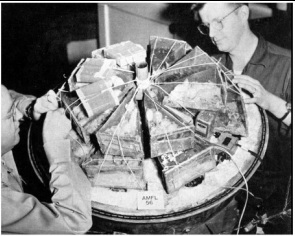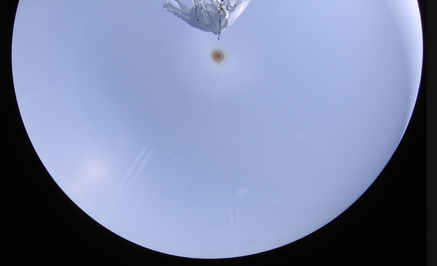| Thinking about the goals for SpaceCat-2. - Improving the spacecraft design, of course. - Another camera or perhaps a video camera is always nice to do. - Shoot for an extremely high altitude? - Try for distance? - Perhaps some additional sensors (temperature, pressure)? - A launch at sunrise? |
0 Comments
Finally looked over the APRS path data . . . and found the farthest ground APRS station that heard the balloon. Over 675 km (419 miles) away! Occurred near the burst altitude. See update in SpaceCat-1 > Spacecraft Data.
The raw GPS data from the BigRedBee APRS was very useful. Saved every 30 seconds, it provided a much better estimate of ascent rate, and a better view of descent rate at high altitudes. With the prior revision of burst altitude and a better ascent rate, the balloon diameter at burst was also revised - downwards.
Not that signs and symbols count a hoot, but the stats for this site today looked somewhat ... cat-like: Extracted the GPS logfile saved to flash memory on the BigRedBee APRS radio tracker. Goal is to see if the raw GPS data improves upon the ascent data and removes outliers. In the process, noted that the highest altitude logged was 31,221 m, or 102,431 feet! From the ascent rate near burst altitude, it seemed that the balloon would have risen higher: the burst was what limited the ascent. Lower spacecraft weight = less gas volume at inflation = more room for expansion . . . next launch?
The SpaceCat-1 flight log/page is largely in place. Small/large tweaks will continue to be made, though, and there are still many TBDs. Working on making the slideshow display in proper orientation. Still debating whether to put relevant spacecraft data into the construction section or flight log. The weebly website hosting service is nice (and free), but the editor is cantankerous, and takes some time to get used to. Also starting to wonder how much it can hold before we have to upgrade to premium. Also note that the web content that takes so long to create is not easily saved: we'll need to save displayed pages as page source for insurance.
After all the work in researching, designing, constructing, and launching SpaceCat-1 ... it seemed a waste not to publish all of the information that we gathered. We drew heavily on the work of so many other amateur balloon groups who have learned through trial and error. Hopefully our data will help in turn others in the future. Together we'll conquer near space!
Stay tuned for SpaceCat-2! Design work begins this Spring . . . |



 RSS Feed
RSS Feed